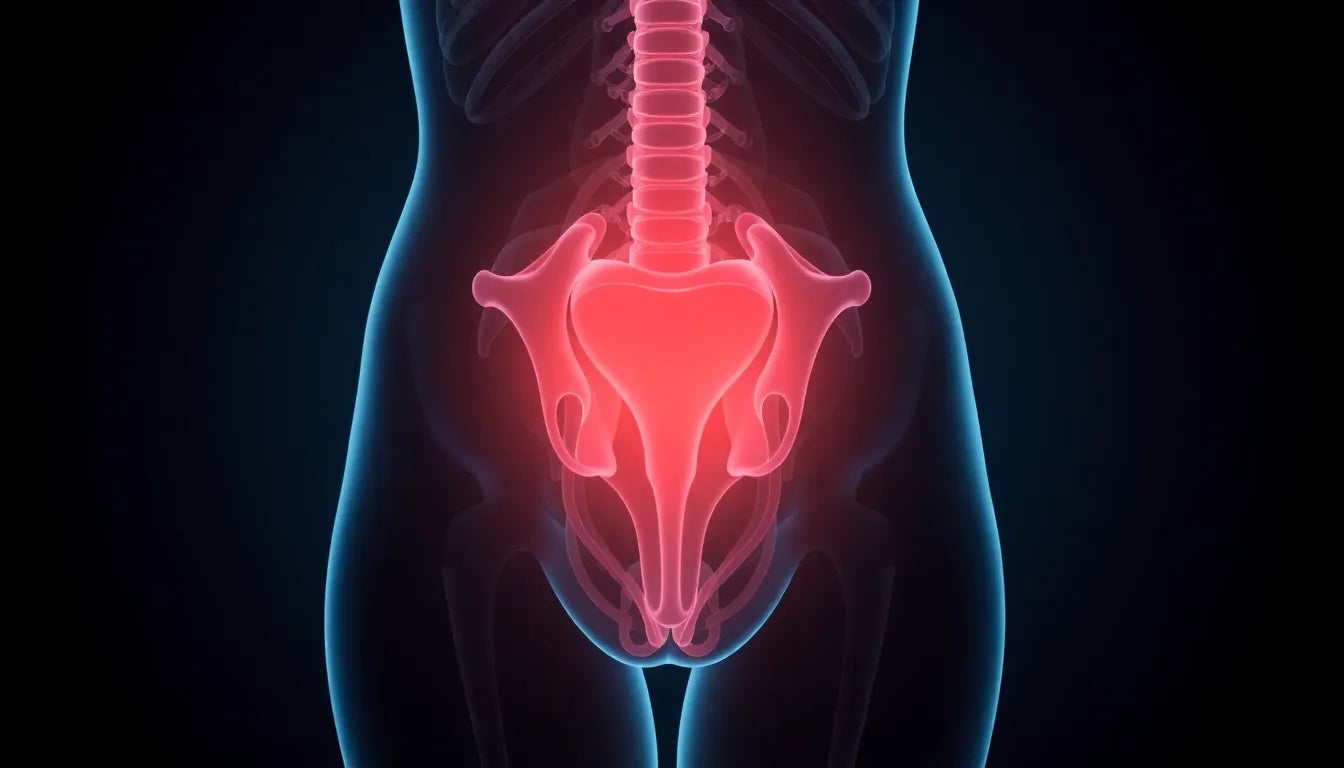Neck pain, or "nakkesmerter" as it is known in Danish, is a prevalent issue that affects a significant portion of the population, particularly those engaged in sedentary jobs. Whether it's the result of long hours spent hunched over a computer, poor posture, or stress, neck pain can significantly impact daily life. For many, it manifests as a dull ache or sharp pain that can lead to headaches, reduced mobility, and even trouble focusing on tasks. It's crucial to address these symptoms early on to prevent them from developing into chronic issues that are harder to treat.
Understanding the causes of neck pain
Several factors contribute to the onset of neck pain. Prolonged computer use is a major culprit, as it often leads to poor posture. When we sit at our desks, we tend to slouch or crane our necks forward, putting undue stress on the cervical spine. Stress is another significant factor, as it can cause muscle tension and exacerbate existing discomfort. Additionally, injuries such as whiplash from car accidents or sports can lead to acute neck pain, while chronic overload from repetitive strain can also be a contributing factor.
Given these common causes, it's evident that lifestyle plays a significant role in the prevalence of neck pain. Fortunately, this also means that by making simple adjustments to our daily routines, we can alleviate much of the discomfort associated with this condition.
The impact of lifestyle changes on neck pain
Adopting certain lifestyle changes can be remarkably effective in managing and even preventing neck pain. Simple adjustments, such as improving your posture, taking regular breaks from sitting, and incorporating gentle stretches into your routine, can make a substantial difference. Moreover, managing stress through techniques such as mindfulness or yoga can help reduce muscle tension and overall discomfort.
In this blog post, we promise to provide you with practical and actionable tips that you can easily integrate into your daily life. These strategies are not only designed to offer immediate relief but also to foster long-term health and well-being. Whether you're dealing with occasional stiffness or persistent pain, these lifestyle changes can help you regain control and improve your quality of life.
Causes and symptoms of neck pain
Understanding the root causes of neck pain is the first step towards effective management. One of the primary contributors is muscle tension resulting from static work environments. Prolonged periods of sitting, particularly with poor posture, can strain the neck muscles and lead to discomfort. This is exacerbated by the modern work culture, where many spend hours at a computer without adequate breaks.

Men's Posture Shirt™ - Black
Activates muscles, relieves tension, and improves posture—ideal for men with neck and back pain.
Stress is another significant factor that can lead to neck pain. It often manifests physically through muscle tension, particularly in the neck and shoulders. Sudden trauma, such as whiplash from a car accident or sports injuries, can also cause acute neck pain. Additionally, chronic overload from repetitive activities can lead to persistent pain, often resulting in a condition known as central sensitization, where the brain amplifies pain signals.
Common symptoms of neck pain include a persistent ache or sharp pain during rest or movement, stiffness, and headaches. In some cases, individuals may experience radiating pain to the shoulders or arms, dizziness, and a reduced range of motion. These symptoms can significantly impact daily activities and quality of life, making it crucial to address them promptly.
Diagnosis and treatment approaches
Proper diagnosis of neck pain typically involves taking a detailed clinical history and performing a physical examination to assess strength, mobility, and neurological status. In some cases, imaging tests or specialist referrals may be necessary, especially if nerve impingement or severe injury is suspected.
When it comes to treatment, a multimodal approach is often recommended. Manual therapy, including joint mobilization and massage, can help reduce stiffness and alleviate pain. Exercise plays a crucial role in active rehabilitation, with tailored exercises designed to improve strength and flexibility being particularly effective. These exercises not only address acute pain but also help prevent future occurrences.
Heat and cold therapy are common modalities used to provide relief. While some prefer cold packs for acute pain relief, others find that heat helps relax tense muscles and alleviate chronic tension. It's important to choose the method that works best for your specific situation.
Medicinal support, such as paracetamol or ibuprofen, can offer short-term relief, but opiates are generally discouraged due to their potential for dependence. Instead, patient education is emphasized, empowering individuals with knowledge and cognitive behavioral techniques to manage chronic pain effectively.
Specialist insights for managing neck pain
Consulting with specialists can provide valuable insights and tailored treatment plans. Physiotherapists focus on functional diagnosis and exercise therapy, emphasizing the importance of active recovery and patient education. They often incorporate evidence-based practices to ensure effective outcomes.
Chiropractors and naprapaths highlight manual techniques and non-pharmacological approaches, offering alternative methods for relieving neck pain. These specialists often provide practical at-home remedies, such as guidance on ergonomic adjustments and the use of cold packs.
By understanding the causes and symptoms of neck pain and exploring various treatment options, individuals can take proactive steps towards managing their condition. Whether through specialist consultations or simple lifestyle changes, addressing neck pain can lead to significant improvements in daily life and overall well-being.
Preventive measures and lifestyle adjustments
Addressing neck pain, or "nakkesmerter," requires more than just treatment; it involves implementing preventive measures and lifestyle adjustments to reduce the risk of recurrence. One of the most effective ways to prevent neck pain is by optimizing your ergonomic setup, particularly in the workplace. Ensuring that your computer screen is at eye level, your chair supports your lower back, and your feet are flat on the ground can significantly reduce muscle tension and strain on the neck.
In addition to ergonomic improvements, incorporating regular movement into your daily routine is crucial. Taking short breaks every hour to stand, stretch, and walk around can help alleviate stiffness and improve circulation. Simple stretches, such as neck tilts and shoulder rolls, can be easily integrated into these breaks to enhance flexibility and reduce tension.

Women's Posture Shirt™ - Black
Supports posture, relieves pain, and activates muscles—perfect for women seeking neck and back relief.
Mindfulness and stress management techniques also play a vital role in preventing neck pain. Practices such as deep breathing, meditation, and yoga can help reduce stress-related muscle tension. By managing stress effectively, you can prevent it from manifesting physically in the form of neck pain, leading to a more comfortable and relaxed state.
Frequently Asked Questions
What are the most common causes of neck pain?
Neck pain is often caused by static work environments, poor posture, stress, and injuries. Prolonged periods of sitting, especially with improper posture, can lead to muscle tension and discomfort. Additionally, stress can exacerbate existing pain by increasing muscle tension.
When should I see a doctor for neck pain?
You should consult a doctor if your neck pain persists, worsens, or is accompanied by neurological symptoms such as numbness, tingling, or weakness in the arms or hands. These symptoms could indicate a more serious underlying condition that requires medical attention.
Can lifestyle changes really make a difference in managing neck pain?
Yes, lifestyle changes can significantly impact the management of neck pain. By incorporating ergonomic adjustments, regular exercise, and stress management techniques, you can reduce symptoms and prevent future occurrences. These changes promote overall neck health and well-being.
Is it better to use heat or cold for neck pain relief?
The choice between heat and cold therapy depends on the specific situation. Cold packs are typically used for acute pain relief, as they can reduce inflammation and numb the area. Heat therapy, on the other hand, is often beneficial for relaxing tense muscles and alleviating chronic tension.
What exercises are recommended for neck pain relief?
Gentle neck stretches, shoulder rolls, and posture exercises are commonly recommended for neck pain relief. These exercises help improve flexibility, reduce tension, and strengthen the muscles supporting the neck. It's important to perform these exercises regularly and with proper form to achieve the best results.
Kilder
- Naprapatlandslaget. ”Nakkesmerter.”
- Fysioterapi Østerbro. ”Nakkesmerter.”
- Åbent Fysioterapi. ”Nakkesmerter.”
- NEMUS. ”Nakkesmerter: Symptomer, selvlindringstips og hvorfor oppsøke en terapeut.”
- Atlasklinikken. ”Nakkeplager.”
- Hasselager Fysioterapi. ”Nakkesmerter.”
- Gigtforeningen. ”Hvor har du ondt? Nakke.”
- Sundhed.dk. ”Nakkesmerter.”


















